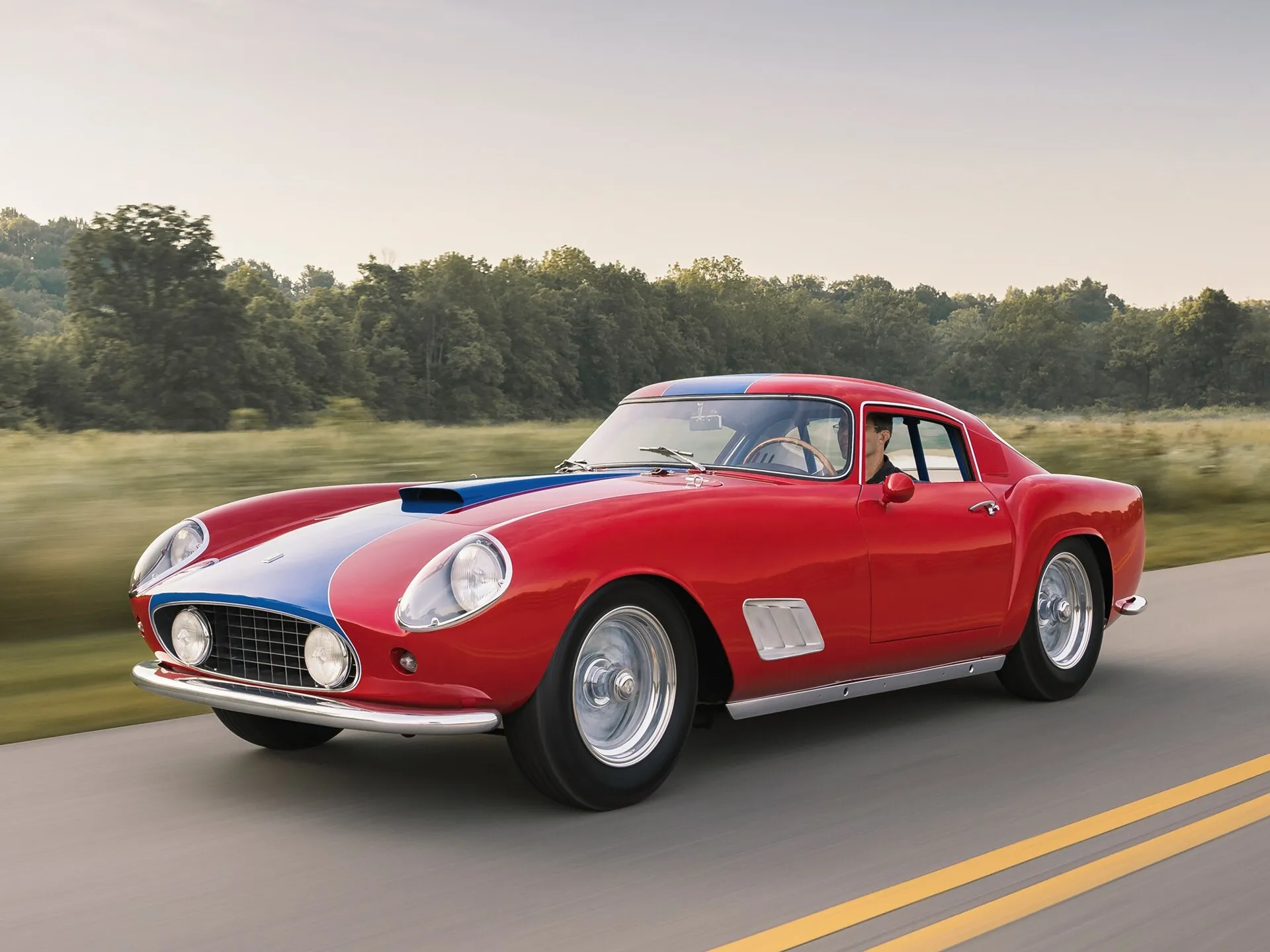1959 Ferrari 250 GT LWB Berlinetta Scaglietta TdF Alloy

The descriptions of the Classic Cars in the Directory were partly generated or supplemented with the help of artificial intelligence (AI). The content may occasionally not always be entirely accurate or factually correct despite careful checking.
The Ferrari 250 GT LWB Berlinetta Scaglietta TdF Alloy 1959 is a rare and exquisite example of the legendary cars that make collectors' hearts beat faster. This model is one of only 36 units produced by Ferrari, which makes it extremely valuable and sought-after by enthusiasts and collectors alike.
This car was launched in 1959 and quickly became an icon of its time, thanks to its sleek body lines, powerful engine, and innovative technology. The 250 GT LWB Berlinetta Scaglietta TdF Alloy is the evolution of the earlier 250GT models, featuring a longer wheelbase, updated suspension, and a more powerful engine.
The TdF in the name stands for Tour de France, the famous endurance race that Ferrari dominated during the '50s and '60s. The Berlinetta body design was created by Carrozzeria Scaglietti, who used lightweight alloys to reduce the weight of the car and improve its speed and handling.
Under the hood, this masterpiece is powered by a 3.0-liter Colombo V12 engine capable of producing 276 horsepower at 7,200 rpm. The engine is coupled with a four-speed manual transmission that delivers power to the rear wheels, allowing this car to achieve a top speed of 150 mph.
The Ferrari 250 GT LWB Berlinetta Scaglietta TdF Alloy is a racing machine designed for performance and speed. Its suspension system features independent front and rear suspension with anti-roll bars, coil springs, and shock absorbers. This provides exceptional handling and makes driving this car an unparalleled experience.
The braking system features disc brakes all around, which was a groundbreaking technology at the time. This system provides excellent stopping power and ensures that the driver has complete control over the car's movements.
Inside, the 250 GT LWB Berlinetta Scaglietta TdF Alloy is a stylish masterpiece that provides comfort and convenience to its occupants. The seats are upholstered with leather and feature adjustable headrests for extra comfort. The dashboard and steering wheel are also covered in fine leather, giving the interior a luxurious touch.
The instrument cluster is simple yet functional, displaying important data such as the speedometer, tachometer, oil pressure, and water temperature. All controls and switches are within easy reach of the driver, emphasizing the car's racing heritage.
In conclusion, the Ferrari 250 GT LWB Berlinetta Scaglietta TdF Alloy 1959 is a rare and exquisite car that combines performance, elegance, and innovation. With its powerful engine, lightweight body, and cutting-edge technology, this car is a true masterpiece of Italian engineering. It is a highly sought-after collectible that will always be admired for its beauty and performance.
Milestones
- 1956: Ferrari introduces the 250 GT LWB Berlinetta, the successor to the 250 Europa GT. - 1957: Coachbuilder Carrozzeria Scaglietti begins producing custom bodies for the 250 GT LWB Berlinetta. - 1958: Ferrari introduces the Tour de France (TdF) variant of the 250 GT LWB Berlinetta, named in honor of the famous French endurance race. - 1959: Ferrari begins offering the 250 GT LWB Berlinetta TdF in aluminum alloy bodywork, reducing weight and improving handling. - 1959: The Ferrari 250 GT LWB Berlinetta Scaglietta TdF Alloy wins the GT class at the 1959 24 Hours of Le Mans, driven by Jean Guichet and Claude Dubois. - 1960: The 250 GT LWB Berlinetta Scaglietta TdF Alloy wins the Tour de France automobile race for the fourth consecutive year, driven by Olivier Gendebien and Paul Frere. - 1960: Ferrari discontinues production of the 250 GT LWB Berlinetta, making the TdF Alloy variant one of the final models produced.Technical
- Engine: Tipo 128E 3.0 L V12 - Max power: 280 bhp @ 7,200 rpm - Max torque: 218 lb-ft @ 5,500 rpm - Transmission: 4-speed manual - Suspension: independent front and rear with coil springs and telescopic shock absorbers - Brakes: discs on all four wheels, with hydraulic dual-circuit system - Steering: worm and sector - Weight: 960 kg (2,116 lbs) - Wheelbase: 2,600 mm (102.4 in) - Length: 4,400 mm (173.2 in) - Width: 1,650 mm (65 in) - Height: 1,240 mm (48.8 in) - Top speed: 174 mph (280 km/h) - 0-60 mph: less than 7 seconds - Production: 36 units (1959-1961)